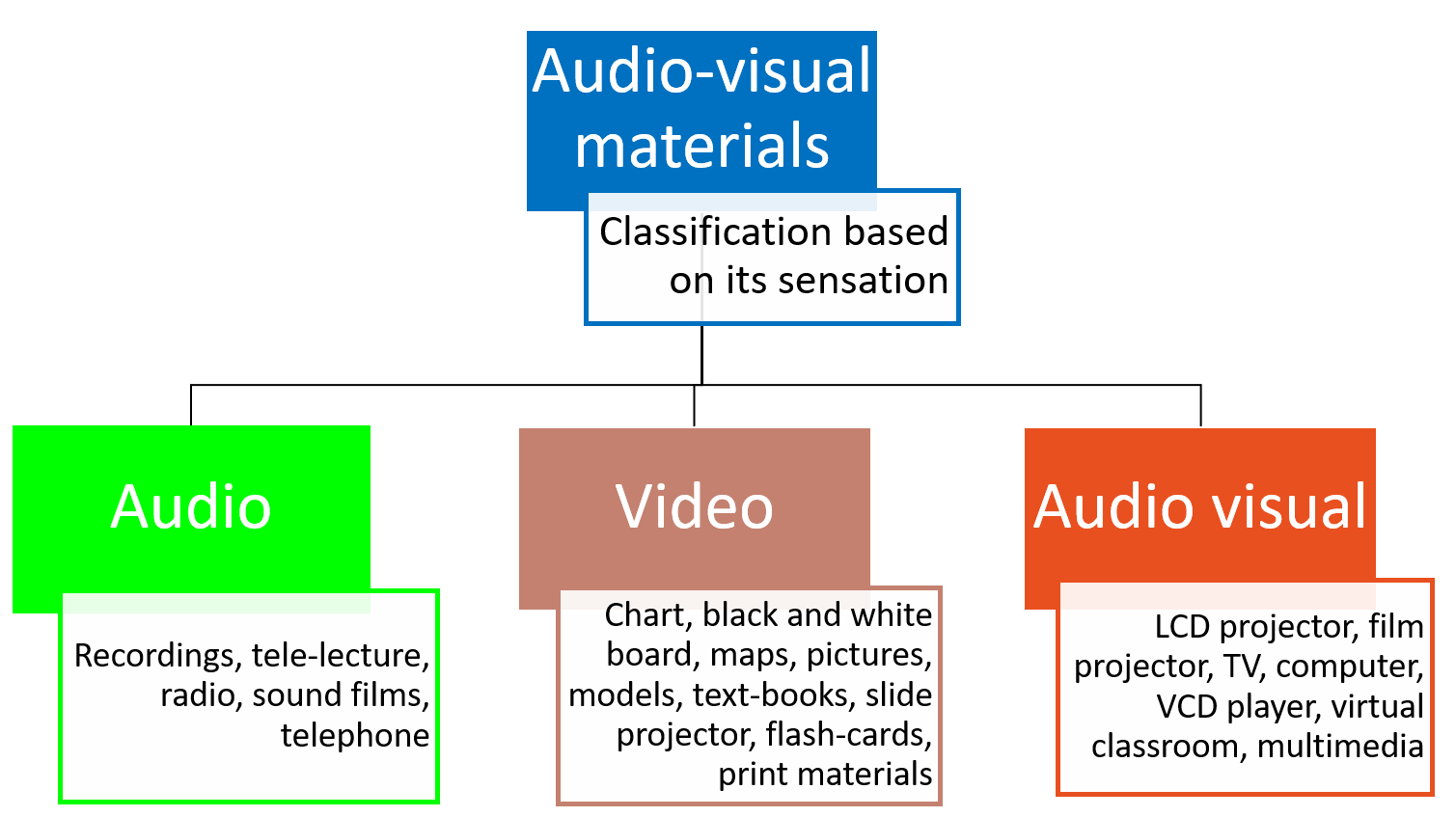What are audio visual materials?
Teaching and learning is always a rapidly changing reality. The tools available evolve much faster than teachers preparedness and readiness to know and use these tools.
Development of the latest technology has created a gap between the learning processes and that a learner is waiting for and what a teacher can provide. It is difficult to attract and retain the student's interest in the subject using only classical tools. Audio-visuals are extensively used to invite attention of students and retain it for long.
There are many different definitions, which mostly differ in relation to technologies available at the given time.
Audio-visual aids are training or educational materials directed at both the senses of hearing and the sense of sight, films, recordings, photographs, etc. used in classroom instructions, library collections or the likes. (Webster dictionary)
The concept of audio-visual aids is not new and it can be traced back to the seventeenth century when John Amos Comenius (1592-1670), a Bohemian educator, introduced pictures as teaching aids in his book Orbis Sensualium Pictus (“Picture of the Sensual World”) that was illustrated with 150 drawings of everyday life.

Picture: commons.wikimedia.org
But a famous Chinese proverb says: one picture is worth ten thousand words.
Classification

For the purposes of this course, audio-visual materials are deemed to be a wide range of multimedia type instructional materials. Most of them are developed as videos, using a variety of audio-visual aids, such as screencast, narrated presentations as the more popular and handy tools for teachers.